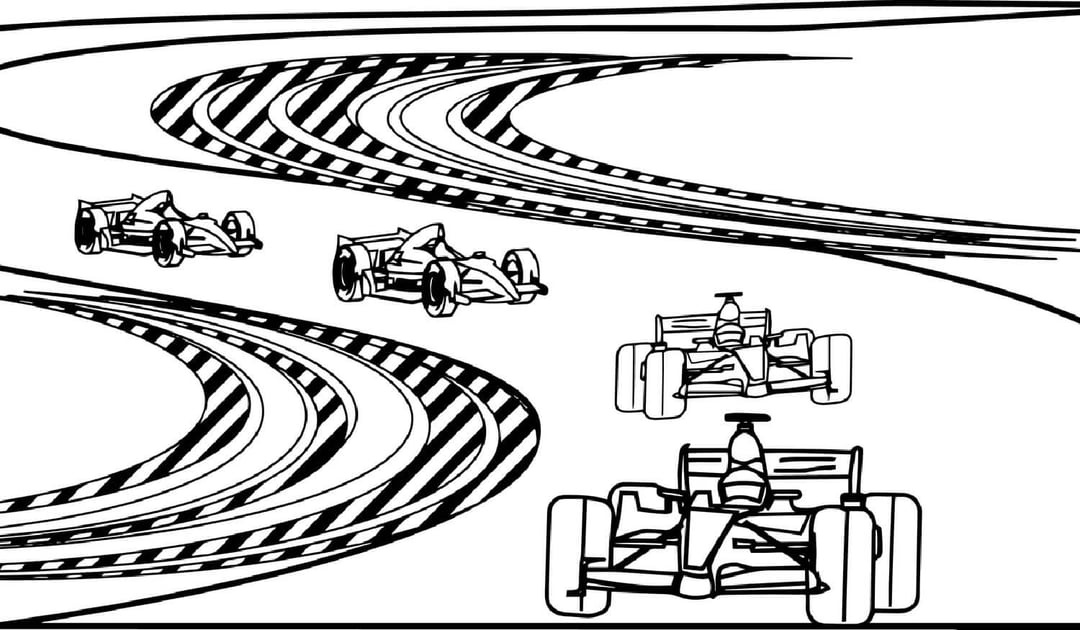
Transportation has many facets, whether it's a bicycle heading down a trail, a truck making a delivery to complete a supply chain or a souped up race car whizzing around a track - all involve transportation. Since Indianapolis knows a thing or two about races, and InTek Freight & Logistics knows a thing or two about supply chains, how about a closer look at the comparison between a race and a supply chain. Beyond the transportation parallel, here are five ways a supply chain is like a race, with a bonus number six if you make it to the end...
Mentioning a supply chain brings in many forms of transportation, including not only the aforementioned trucks, but also cars, vans, trains, ocean-going ships, airplanes - and just about any other conveyance that helps get a product from raw material to end consumer. In a race, transportation options are more limited, as in, everyone must use pretty much the same type of car (or truck), whether it's NASCAR, F1 or the one we're kind of partial to here, Indy Car. But even though the transportation modes may vary, they're a vital component of both a race and a supply chain.
Time is another key element of both supply chains and races. After all, the term race against time is pretty self explanatory. In both cases, navigating to the end in the fastest manner is paramount. For a supply chain, it's getting products produced and delivered to customers in a timely manner that makes the difference. In a race, it's getting the car across the finish line first - in other words, in the least amount of time - that matters most to the bottom line.
Whether it's a race or a supply chain, there's no denying it's a competition. In supply chains, businesses are constantly in competition with other businesses for the same customers. They're both competing with businesses that deliver similar products and competing with other uses of consumers' funds. On a race track, well, that's pretty self-explanatory. Cars (and race teams as a whole) are very directly in competition with each other to get the win.
The shape of a supply chain and the shape of a race track can vary company to company and race to race. For supply chains, it tends to be one of a couple of standard shapes, either a traditional linear model, or the newer, circular supply chain. Linear takes products from raw materials to the consumer and terminates there, while a circular model involves reuse of waste and returned items and just keeps going round and round. There's room for variations within these supply chain models too Similarly, race tracks have certain standards - for one the start and finish line - but they too can be straight line with a clear beginning and end, or a circle/oval that keeps rotating, or a windy road course or something else.
Of course, races and supply chains require another key element to function, and that is people. After all, we kind of invented both concepts. A race - when we refer to auto racing - requires a whole team behind the car, including the driver, the pit crew, the control center, logistics and transportation staff, administration, ownership and a variety of other support staff. A supply chain involves even more people - with some overlap - like logistics and transportation, harvesters of raw materials, factory employees, designers, inventory and warehouse pros, retailers and many, many more. All this goes to say, as important as all the equipment is, it's the people behind the equipment that make both race cars and supply chains go.
So here's the bonus round, and it ties into many of the previous items. A strategic approach to both racing and supply chains is a must to make the most of one's resources, maximize efficiency, control costs, optimize speed and more. A race team that just hits the track each week without extensive planning and strategy - driving by the seat of their pants if you will - is likely doomed to failure. At the same time, a supply chain that's just winging it each day from step to step - without a detailed supply chain management strategy - is the sign of a business that won't last long. Investing in a strategic approach to racing or your supply chain is not a choice, but a necessity.
And while we at InTek may not be able to help you win the Indy 500, we can help with your supply chain strategy and day to day logistics management. Tell us a bit about yourself and we'll follow up to talk solutions tailor-made for your business.
Learn more about freight and logistics - and what we do at InTek - in our Learning Center. Or you can start with a few of the links below:
